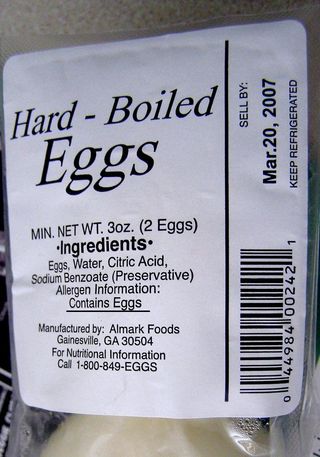By: Dr. Ken Broda Bahm –
A warning that calls attention to a product’s potential danger is obviously an important part of a company’s litigation prevention and defense. But according to one recent statistic, a substantial portion of the public, and potential jury pool, may be a bit cynical on the question of whether warnings are designed to educate or just provide cover. In a 2010 Decision Analysis survey on attitudes toward products liability litigation, fully 70% shared the belief that product warnings exist to protect companies in the event of lawsuits rather than to protect the public from product risks. On the bright side, that means that if “CYA” truly is your motivation for consumer warnings, you won’t be violating jurors’ already low expectations by admitting it. On the even brighter side, it means that if you can convincingly reframe your own company’s warning in the broader terms of public education, you may end up surprising jurors and gaining an important measure of credibility in the process.
The best consumer warnings should be oriented toward “FYI” — information, and not just defense. So how do you develop and communicate a product warning that does that? A few ways:
1.) Include warnings within the broader picture of necessary information. Try to steer your warning strategy away from the frightening list of dire consequences that seem to come during the next-to-last moments of televised drug commercials. Instead, provide a full spectrum of information, including product uses, and answers to broader questions of how and when consumers should use the product. A warning in that context is more likely to be seen as effort toward education rather than excuse making.
2.) Don’t leave the printed warning as the lone voice. If a single printed product warning is the only time that you are talking about risks, then jurors can feel like you are just checking a box instead of trying to make sure that users genuinely understand potential problems. In a recent products mock trial, for example, we found that the number of defense-oriented jurors who said, “they warned – case closed,” was exceeded by the number who said, “due to the danger involved, the company needed to take special efforts to make sure that the warning is read.” In that case, it meant an expectation that the company would actually hold classes to make sure those who installed the products were aware of the revised precautions. In other words, when the risks are serious, jurors can expect a broad-spectrum effort, and not just a single warning.
3.) Ensure that everyone (including your marketing and sales force) is consistent with the warning. Nothing can undermine the effectiveness of a clear no-nonsense warning as well as testimony showing that the sales force didn’t know, didn’t care, or consciously counseled buyers to ignore the warning. In the eyes of many jurors, even a single rogue salesperson can end up defeating the best product warning plans.
4.) Make an educated public not only possible, but likely. When the end-user has to work in order to locate and carefully unfold a list of product dangers, and then find a magnifying glass to access the unbroken field of 3-point font, it is easier for jurors to believe that the company didn’t really expect that every user would inform them. Instead, ask yourself, “what if our mission wasn’t just to sell the product, but to also try at the level of a true public information campaign, to make sure that the product was only used by the right people and in the right ways?” Some industries (tobacco and alcohol come to mind) have learned the hard way and embraced public information campaigns only after damage has been done. You will certainly have a better story to tell to jurors if you can show that emphasis right out of the gate.
The public’s attitudes toward products liability deserves more attention and study, because it is one critical juncture where the world of litigation intersects with the public’s daily relationship to products. One approach to studying this is to develop surveys that target the most relevant attitudes in products cases, as the Decision Analysis study did (and it includes a number of interesting findings that I haven’t mentioned). Another option is to investigate jurors’ product attitudes experimentally.
______
Related Posts:
- Address the Most Dangerous Feature of Your Product: Dishonesty
- Know Your ‘God Terms’ and Your ‘Devil Terms’
______
 Decision Analysis (2010). National Survey on Jury Attitudes: Product Liability Lawyers USA Online
Decision Analysis (2010). National Survey on Jury Attitudes: Product Liability Lawyers USA Online
Photo Credit: rcmaclean, Flickr Creative Commons
